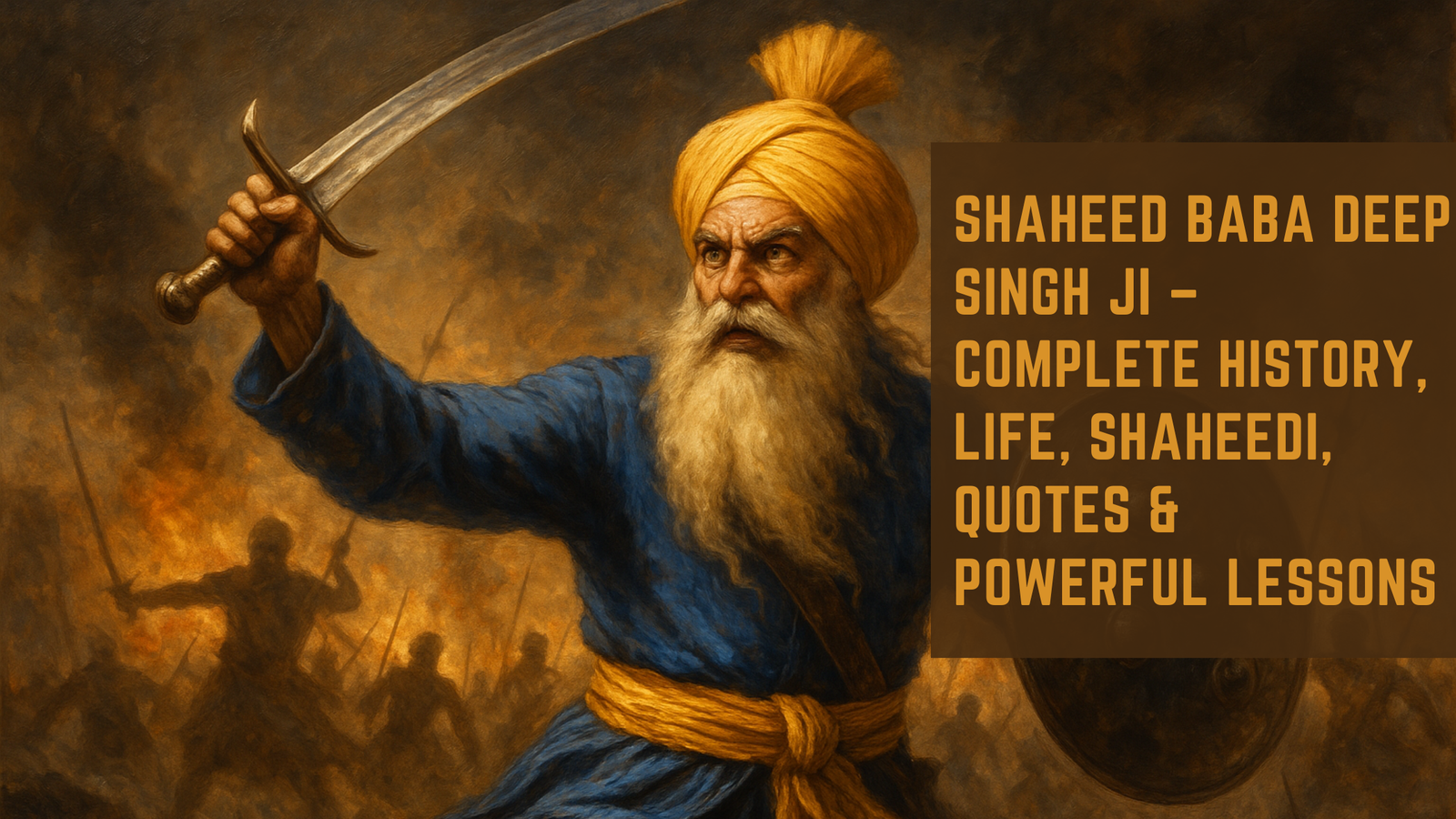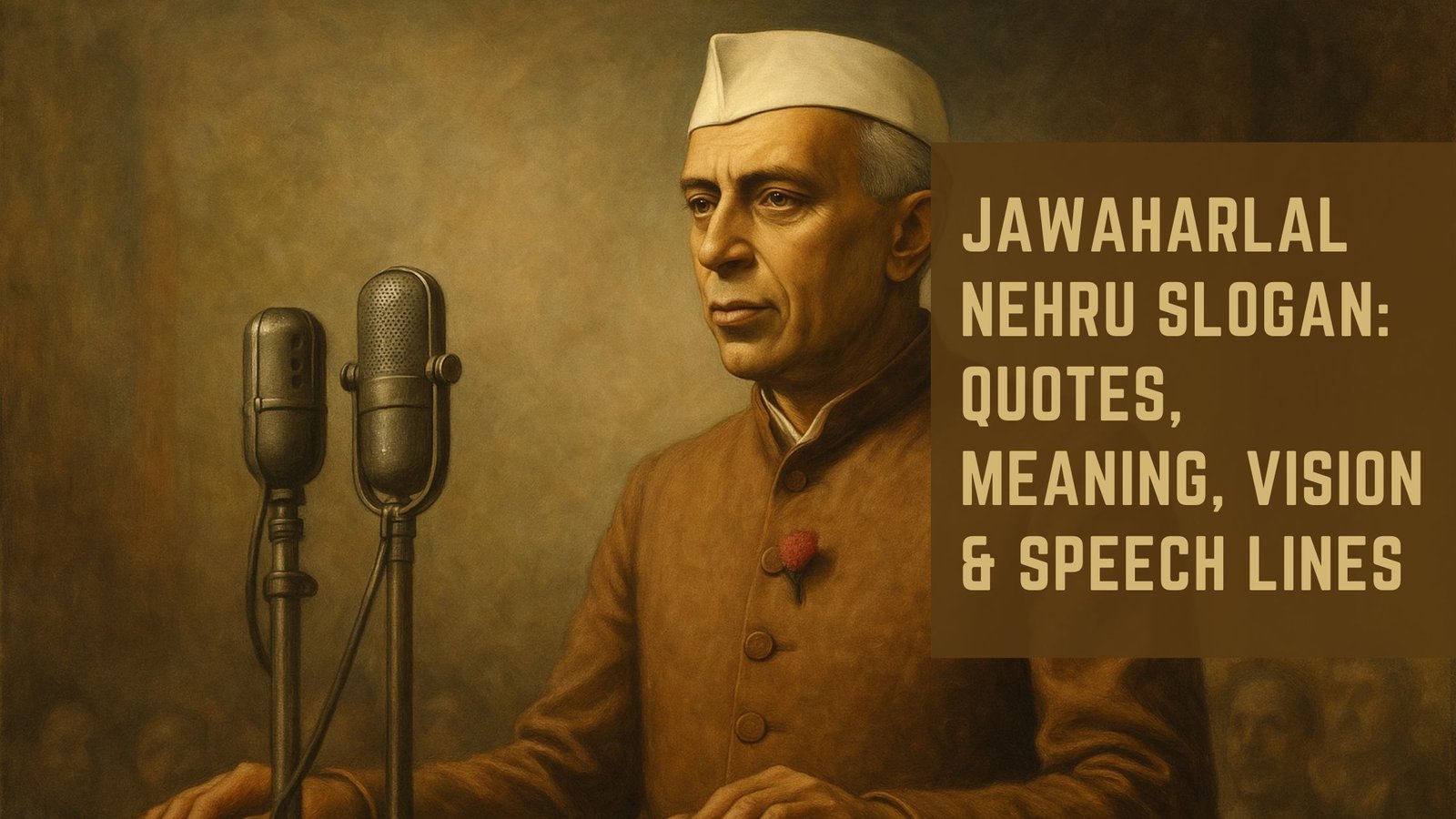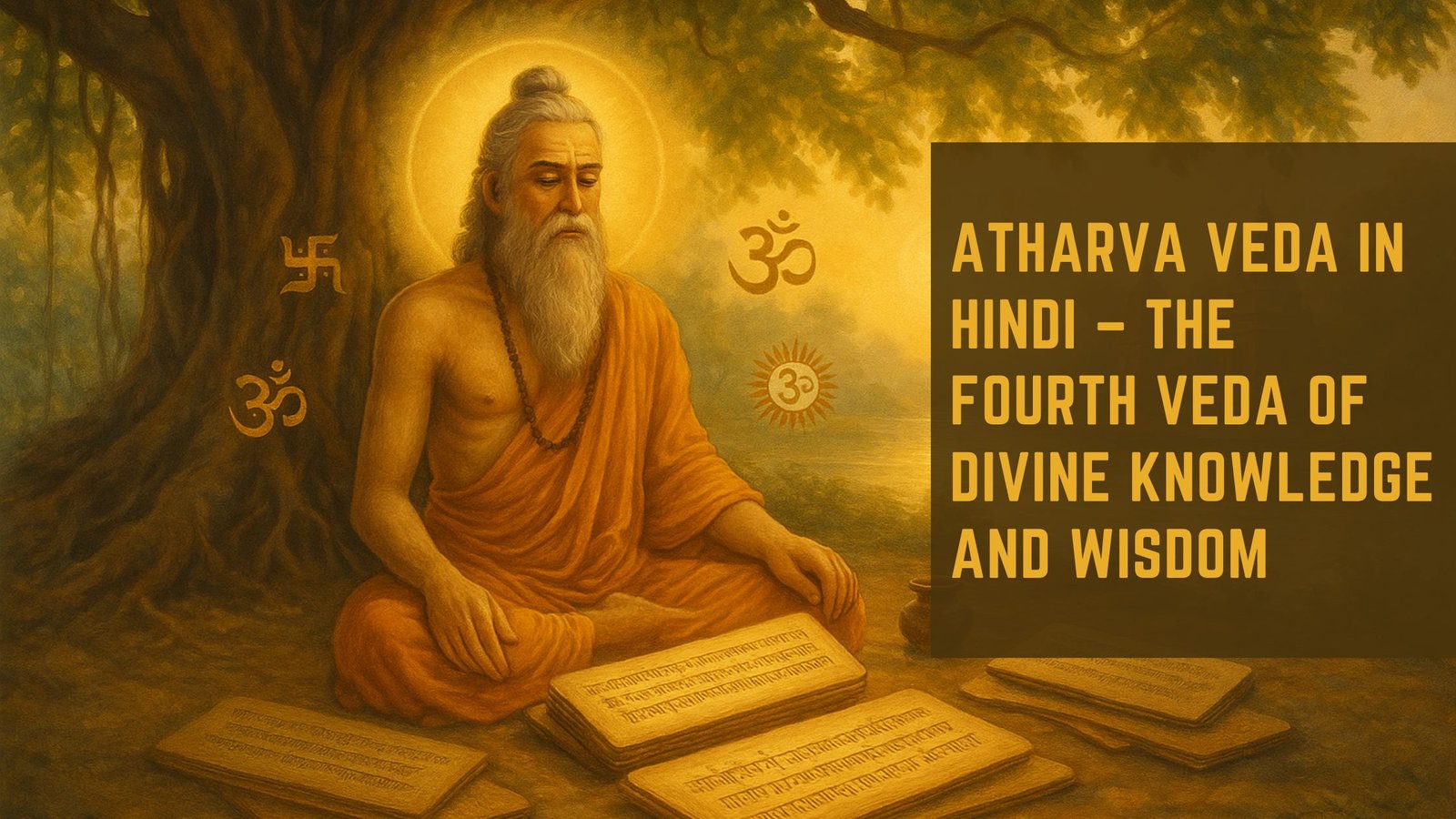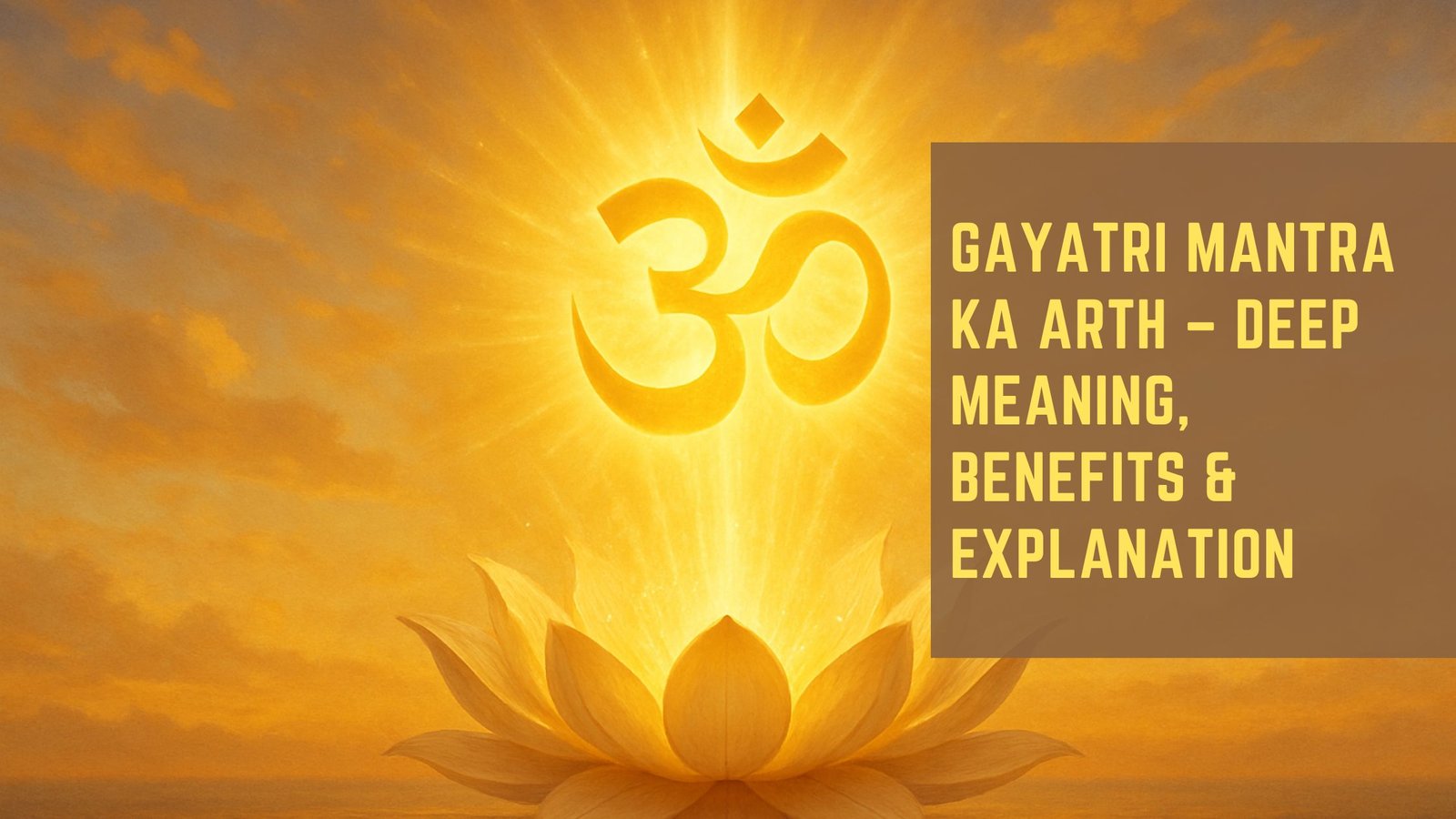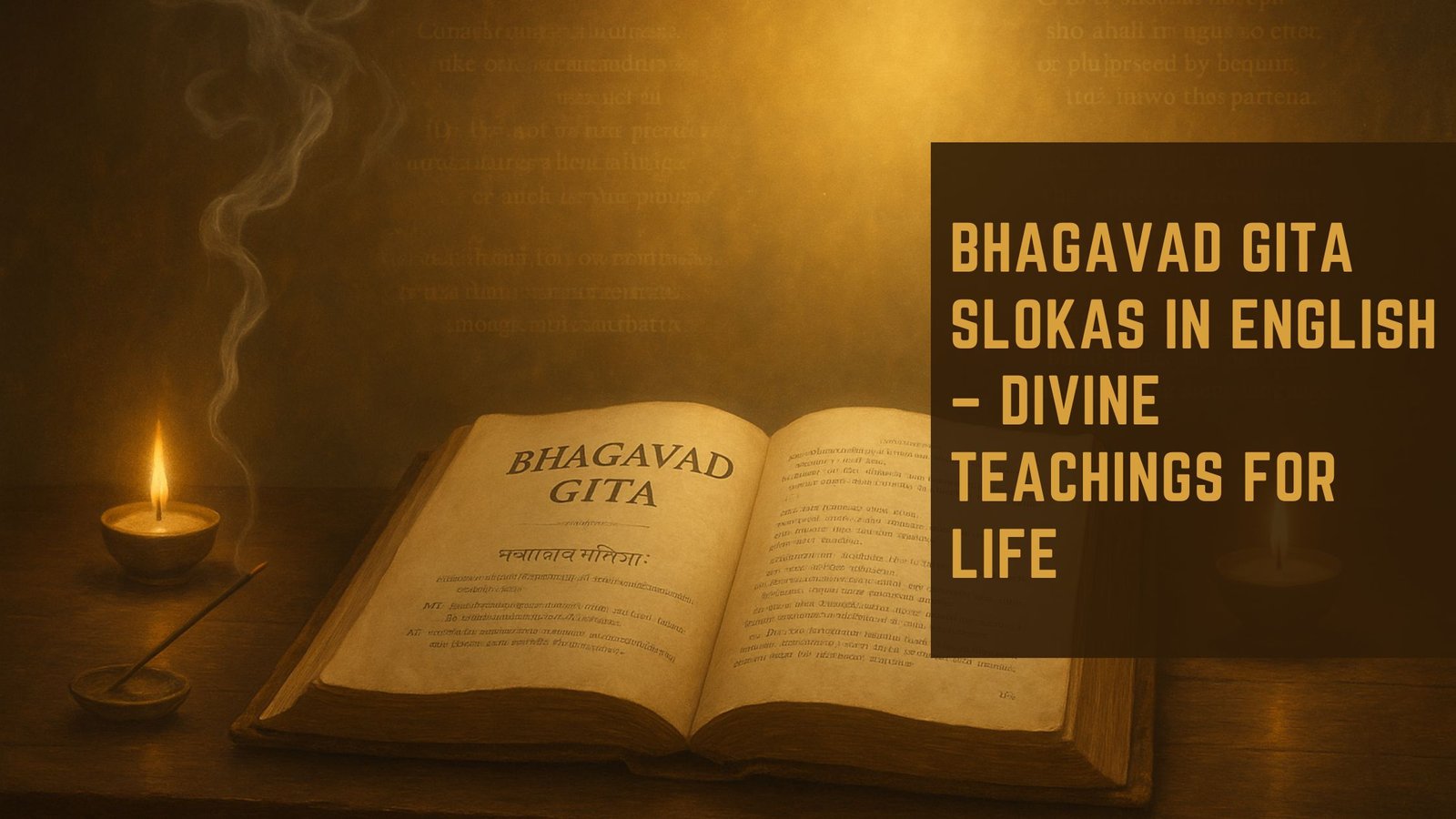The Teaching of Bhagavad Gita is one of the most revered scriptures in Hindu philosophy, offering profound wisdom on life, duty, righteousness, and self-realization. It is a divine conversation between Lord Krishna and Arjuna during the Mahabharata, where Krishna enlightens Arjuna about his duties and the true essence of life.
One of the most quoted teachings of the Gita is:
“कर्मण्येवाधिकारस्ते मा फलेषु कदाचन।”
“You have the right to perform your duty, but never to its fruits.” (Bhagavad Gita – Chapter 2, Verse 47)
This principle teaches detachment from results and focusing on righteous action.
Table of Contents

Explanation of the Image
The image beautifully portrays Lord Krishna in his divine form, holding the Sudarshan Chakra, symbolizing his supreme power. Behind him, Arjuna is seen in the battlefield, signifying the moment of deep self-doubt before Krishna imparts the wisdom of the Bhagavad Gita.
In the foreground, an open book with prayer beads represents the eternal knowledge of the Teaching of Bhagavad Gita, symbolizing how its teachings remain relevant across ages. The presence of peacock feathers at the top corners signifies Krishna’s divine presence and wisdom.
Core Teaching of Bhagavad Gita
1. Right to Action, Not to the Results
- “Perform your prescribed duty without being attached to the fruits of action.”
- This teaches us that our focus should be on sincere effort rather than worrying about rewards.
2. Dharma (Righteous Duty) Above All
- One must always adhere to their dharma (duty) without hesitation. Arjuna was hesitant to fight, but Krishna reminded him that fulfilling one’s duty is the highest moral obligation.
3. The Concept of Nishkama Karma (Selfless Action)
- Performing actions without expectations purifies the soul and leads to inner peace.
4. Mind Control and Equanimity
- Krishna emphasizes being unaffected by success and failure. This is achieved by practicing Yogic discipline and meditation.
5. Faith and Devotion to the Divine
- Krishna assures that total surrender and unwavering faith in the divine lead to liberation.
6. The Immortality of the Soul
- The Gita explains that the soul is eternal and never perishes. Only the body undergoes change, reinforcing the idea of detachment from the material world.
7. Three Paths to Liberation
- Karma Yoga (Path of Action)
- Bhakti Yoga (Path of Devotion)
- Jnana Yoga (Path of Knowledge)
All three paths lead to the ultimate realization of the self.
Spiritual Relevance in Daily Life
- Work with Dedication: Apply the Gita’s teachings in professional and personal life by focusing on effort rather than results.
- Face Challenges Bravely: Just like Arjuna, we all face dilemmas, but righteousness and perseverance should guide our actions.
- Practice Detachment: Avoid stress and anxiety by surrendering to the divine and performing duties with sincerity.
- Live with Humility and Compassion: The Gita promotes inner peace by encouraging a balanced and righteous lifestyle.
Quotes in Different Languages Related to the Image
1. Sanskrit:
- “कर्मण्येवाधिकारस्ते मा फलेषु कदाचन।”
2. Hindi:
- “तुम्हारा अधिकार केवल कर्म करने में है, उसके फलों में कभी नहीं।”
3. English:
- “Your right is to perform your duty, but never to its fruits.”
Conclusion
The Bhagavad Gita is more than just a sacred text; it is a guide to righteous living. Its teachings encourage us to live with discipline, devotion, and a sense of duty, free from the anxieties of success and failure.
Lord Krishna’s wisdom remains immortal and universally applicable, teaching us the ultimate truth of selfless action and devotion. Let us embrace these teachings in our daily lives and walk the path of righteousness.
The teaching of Bhagavad Gita, as shared by The Gita, provide a spiritual roadmap for righteous living.
“By following the path of Dharma, we attain eternal peace and liberation.”

